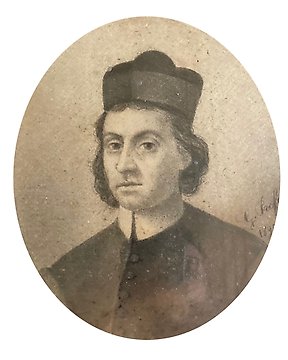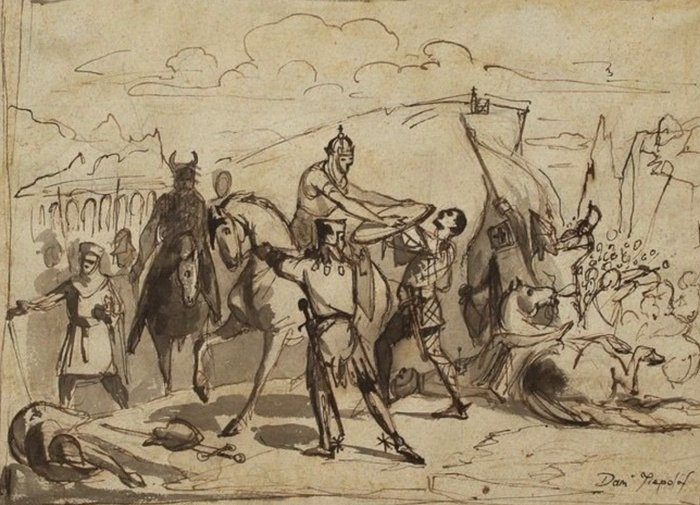
Profeti G. - Ritratto ecclesiastico
Nr 83361197

Nr 83361197

Giandomenico Tiepolo (1727 1804), studio bozza / acquarello / china su carta 23 x 28 cm, possibile bozza per Gerusalemme Liberata (Torquato Tasso), firmato in basso a destra
Provenienza galleria E. Royer, Rouen (Francia)
Giandomenico Tiepolo, figlio di Giambattista e di Cecilia Guardi (sorella dei noti pittori Antonio e Francesco) è nato a Venezia nel 1727 dove muore nel 1804. Allievo del padre, collaborò con lui alla realizzazione dei suoi più grandi affreschi riuscendo però a costruire un proprio stile visivo e tematico. La sua opera più importante, in cui manifesta il meglio della propria personalità, rimane senza dubbio il complesso degli affreschi della Foresteria della Villa Valmarana dove ritrae, con acuta ironia, la società veneziana del suo tempo. Alcuni dei soggetti della Villa, tra cui il Mondo novo, verranno da lui ripresi nella Villa di Zianigo dove si era ritirato; tali affreschi sono ora esposti nel museo di Cà Rezzonico a Venezia. I Valmarana commissionano un ciclo di affreschi sia per il loro palazzo di città, distrutto durante la guerra, sia per la residenza estiva di San Bastiano. Su suggerimento del committente Giustino Valmarana, i Tiepolo (padre e figli) si dedicano ai grandi temi epici, scegliendo quando possibile gli episodi sentimentali: Ifigenia in Aulide, Iliade, Eneide, Orlando Furioso, Gerusalemme Liberata.
Giandomenico Tiepolo (1727 1804), study draft / ink on paper 23 x 28 cm, possible draft for Gerusalemme Liberata (Torquato Tasso), signed lower right
Provenance E. Royer gallery, Rouen (France)
Giandomenico Tiepolo, son of Giambattista and Cecilia Guardi (sister of the well-known painters Antonio and Francesco) was born in Venice in 1727 where he died in 1804. A pupil of his father, he collaborated with him on the creation of his greatest frescoes, however managing to build his own visual and thematic style. His most important work, in which he shows the best of his personality, undoubtedly remains the complex of frescoes in the Foresteria of Villa Valmarana where he portrays, with acute irony, the Venetian society of his time. Some of the subjects of the Villa, including the Mondo novo, will be resumed by him in the Villa of Zianigo where he had retired; these frescoes are now exhibited in the Cà Rezzonico museum in Venice. The Valmaranas commissioned a cycle of frescoes both for their city palace, destroyed during the war, and for the summer residence of San Bastiano. At the suggestion of the client Giustino Valmarana, the Tiepolos (father and sons) dedicated themselves to the great epic themes, choosing sentimental episodes when possible: Iphigenia in Aulis, Iliad, Aeneid, Orlando Furioso, Gerusalemme Liberata.
#ESArtMarch
Hur du köper på Catawiki
1. Upptäck något speciellt
2. Lägg det högsta budet
3. Gör en säker betalning